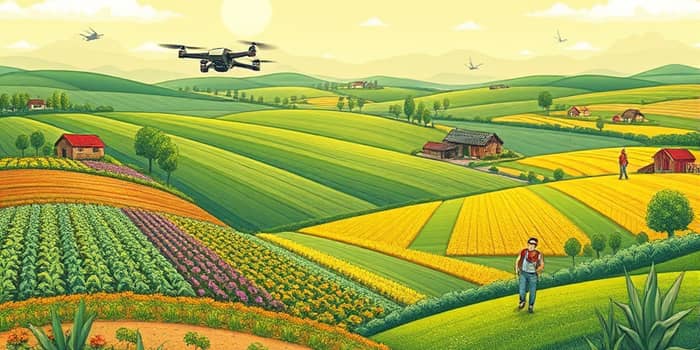
The world faces the daunting task of nourishing a growing population while preserving the planet’s vital resources. Sustainable agriculture offers a path forward, combining innovation, stewardship, and profit to ensure food security for generations to come.
Sustainable agriculture is more than a buzzword—it is a holistic approach to farming that balances productivity with environmental care. By integrating environmental health, economic profitability, and social equity, it seeks to meet today’s needs without compromising the future. Key principles include soil conservation, water stewardship, biodiversity protection, and fair labor practices.
At its core, sustainable agriculture addresses three interlinked pillars:
Agriculture remains the world’s single largest employer, with over 40% of the global population engaged in farming. This scale underscores both the impact of unsustainable practices and the promise of transformation. Organic and regenerative systems are expanding on millions of hectares worldwide, indicating growing recognition of sustainable methods.
In the United States, momentum is visible: by 2025, more than 60% of farms plan to adopt cover cropping, and regenerative agriculture acreage is projected to exceed 10 million acres. Adoption rates of various sustainable practices reflect a shift in mindset:
Regions across Europe, Asia, and Africa are also embracing sustainable techniques, driven by policy incentives, consumer demand, and community-led initiatives. This global trend highlights the feasibility of scaling up resilient food systems.
Contrary to outdated assumptions, sustainable farming can deliver lower operational costs and competitive yields over time. Numerous studies show that after the initial transition period—where investments in equipment, certification, and training are required—farm-level margins often improve.
A meta-analysis of 360 crop projects revealed a mean yield increase of 79% and a geometric mean of 64% post-transition. Beyond yield improvements, economic advantages include:
Farmers who embrace long-term planning and risk management often find that sustainable systems buffer against price volatility and climate shocks, securing steady income streams.
Technology is a catalyst for more precise, efficient, and data-driven farming. Key innovations include:
These tools lower labor demands, minimize waste, and empower farmers to make informed decisions, leading to healthier ecosystems and greater economic returns.
Sustainable agriculture delivers a wide array of environmental and social dividends:
– Reduces pesticide and fertilizer use, improving water quality and human health.
– Improves soil health and water management, enhancing long-term productivity.
– Supports biodiversity and habitat restoration, benefiting pollinators and wildlife.
– Bolsters community and social resilience by strengthening local food systems and rural economies.
By rehabilitating degraded lands and conserving resources, sustainable farms contribute to climate mitigation and adaptation goals, making them vital components of a net-zero future.
Despite its promise, sustainable agriculture faces economic, structural, and educational obstacles:
Addressing these challenges requires coordinated efforts from governments, financial institutions, research bodies, and community organizations to provide incentives, knowledge-sharing, and market access.
Policy frameworks for 2025 and beyond emphasize carbon sequestration incentives, research funding, and subsidies for regenerative techniques. The transition to climate-smart agriculture is propelled by:
– Growing consumer demand for transparently sourced foods.
– Commitments from private sector players to achieve net-zero emissions in supply chains.
– Collaborative knowledge-sharing networks linking universities, NGOs, and farmer cooperatives.
Emerging market mechanisms, such as carbon credits for soil carbon storage, offer new revenue streams for farmers. As global population surpasses 9.7 billion by 2050, sustainable agriculture will be essential for achieving food security and climate resilience.
A cooperative in northern India transitioned from monocropping rice to a diversified system with legumes, vegetables, and agroforestry. Within three years, average yields rose by 42%, and household incomes increased by 33%. The community reinvested profits in solar irrigation and grain storage facilities, further strengthening local resilience.
Similar success stories from Latin America and sub-Saharan Africa underscore the universal potential of sustainable practices to transform livelihoods and landscapes.
Sustainable agriculture is not a niche movement—it is the cornerstone of a resilient food system that benefits farmers, consumers, and the Earth. By embracing innovation, ecological stewardship, and equitable practices, the sector can deliver on the bold promise of feeding the world profitably.
Ultimately, investing in sustainable farming is an investment in our collective future—a future where abundance, fairness, and environmental health coexist harmoniously.
References













